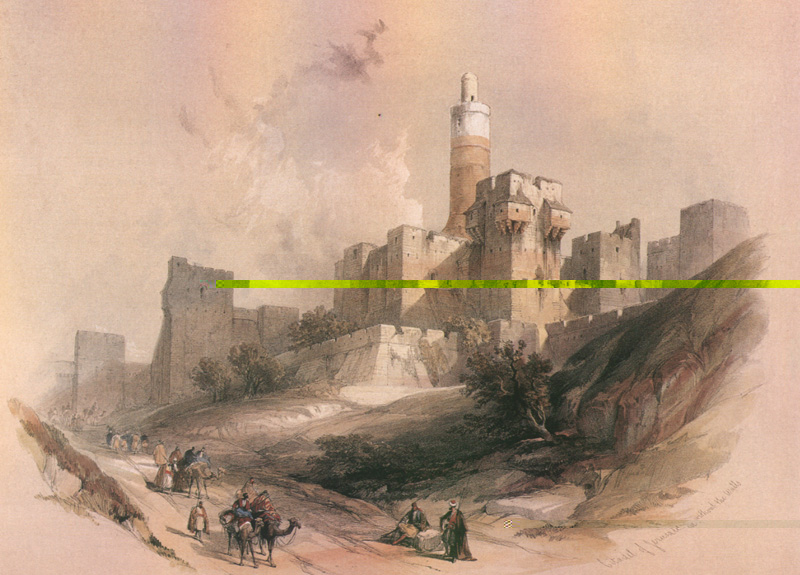David's Tower
I think more confusion reigns in the minds of most people concerning "David's" Tower,
than any other land mark in Israel! The entire area - the north west corner of the Old
City, was completely unknown to King David; it didn't even "exist" in his day, nor for long
after. When the old City of David began, under his son Solomon and the later kings, to
expand, first northwards over today's Temple Mount - Har'm es-Sharif to Islam - and then
spreading westwards over the Tyropean Valley and up the Western Hill to where is today's
Jaffa Gate, that area became indeed vulnerable: the Old City in David's day - and before -
was beautifully protected on three sides by the Valley of Hinnom west and south, and the
Kidron Valley together with Mount Scopus and the Mount of Olives to the east, while the
north was protected by various royal establishments and probably a garrison of some
sort (perhaps to be deduced from the reference at the end of this verse in Nehemiah):
After him repaired Nehemiah the son of Azbuk, the ruler of the half part of Beth Zur, unto
the place over against the sepulchres of David, and to the pool that was made, and unto the
house of the mighty. Nehemiah III:16.
The northern wall of Jerusalem, until probably Hasmonean times or a bit later +/-165-60 BCE,
ran (approximately), from today's Jaffa Gate, eastwards down the hill, (along the line of
today's Chain Street), to fetch up against the Temple Mount about thirty yards or so north
of the edge of the exposed Western (Wailing) Wall. The entire "shoulder" of the north
western corner of the city was now co-joined with the rest of the high ground and
constituted a definite strategic threat to the safety of the city. Excavations in today's
Citadel have uncovered foundations suggesting fortifications in the area as far back as the
eigth century BCE., and it is certain that by the time the Hasmoneans established themselves,
the area was well fortified, although they, too, added to the defences there.
It is,
however, to Herod the Great (ca 40BCE - ca 4 CE.), that we owe - to a large extent, the
building and the remains that we see today, although the Crusaders and Ottomans went on to
make their own additions.
David Roberts' view is taken from about half way down the road leading to the crossover to
the other side of the Valley of Hinnom. Behind our right shoulder is Mount Zion and to our
left, the Sultan's Pools; the roadway in view is today's real road.
